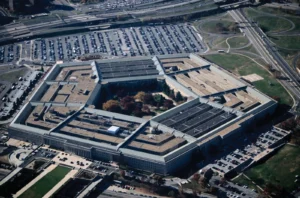Why the US Military Budget is So Large: An Ultimate Guide
Have you ever stopped to think about why the US military budget is, well, quite frankly, enormous? It’s a question that often pops up, and the answer isn’t as simple as one might initially assume. While every nation has some form of defense, the sheer scale and cost of the United States’ military operations are truly in a league of their own. It’s a complex web of historical context, strategic decisions, and, dare I say, some rather unique economic incentives. Let’s try to untangle some of that, shall we?
Beyond Basic Defense: A Global Posture
At its core, any military exists to defend its homeland from external threats. Take Iceland’s armed forces, for instance; they consist of a few ships, an airplane, some helicopters, and radar stations, all managed by their Coast Guard. They have, you know, almost no ability to send forces abroad, and their constitution doesn’t even have a way to declare war. Some countries, they might build on this defensive capability with a limited ability to operate overseas, perhaps for a small scale operation. This, of course, already demands a pretty expensive mix of training, equipment, and meticulous planning. Domestic defense can be permanent, stationary even, but anything sent abroad? That needs to be temporary and mobile, which just skyrockets costs and complexity. Large scale expeditionary capabilities, the kind that can really project power, are usually limited to the biggest, best funded militaries out there, like France, Mexico, or Canada.
But then, there’s the US military. It’s different. Very different. While most nations can defend at home, and some can deploy a bit abroad, the US military has a rather singular strategic stance. It’s almost as if they’ve, well, turned the entire world into their home turf. Their objective is, quite simply, the ability to fight any kind of fight, in any location, at any moment. To an American, this might just sound like what a military is supposed to do, but it’s actually a uniquely American approach. Most militaries, they’re just designed to respond to relevant regional threats, scaling up for a foreign war only if absolutely necessary. This all encompassing mission, this degree of flexibility and globality, it’s unmatched, and it incurs a near endless array of exceptional costs.
- Defensive vs. Expeditionary: Basic defense is about protecting the homeland; expeditionary capabilities involve deploying forces abroad, which is inherently more costly and complex due to the need for mobility and temporary infrastructure.
- Unique US Posture: The US military aims for the ability to fight anywhere, anytime, essentially treating the entire world as “home turf,” a strategic approach unlike most other nations.
- Globality and Flexibility: This unparalleled global reach and flexibility are primary drivers of the US military’s exceptional expenses.
The Hidden Costs: Beyond Weapons and Soldiers
When we talk about the cost, it’s not just about tanks and fighter jets, you know. It goes into some areas you might not even consider. For example, the US military actually pays to produce its own private label of chicken tenderloins and then ships them all around the world. Why? Because they run grocery stores on bases, like one in Southeastern Turkey, where thousands of service members are stationed. And why are they there? Well, in that particular case, it’s because they keep about 50 nuclear warheads there, just in case one needs to be used in Europe, Africa, the Middle East, or elsewhere. It’s a whole ecosystem, really.
They also pay professional sports teams to include patriotic ceremonies in their games, honoring service members. This isn’t just for show; it’s to help boost recruiting to the level needed to staff all their roles worldwide. And then there are the more futuristic, almost sci-fi, expenses. They’ve paid to develop a bipedal humanoid robot, which has even gone viral sometimes. The thinking there is that these robots could integrate into their ranks in the future, taking on the most dull, dirty, and dangerous tasks, giving them a competitive edge. These costs, they just pile up, spanning the entire globe from a logistical and spatial standpoint. Covering the world, it’s nothing less than a monumentally challenging and expensive undertaking.
- Logistical Overhead: Costs extend to maintaining global infrastructure, including unexpected items like private label food for overseas bases.
- Recruitment Efforts: Funding patriotic ceremonies in professional sports aims to boost recruitment numbers needed for global operations.
- Future Technology Investment: Development of advanced tech, like bipedal robots, is seen as a way to gain competitive advantages and handle hazardous tasks.
- Global Reach Expenses: The sheer logistical challenge of maintaining a worldwide presence contributes significantly to the budget.
The Temporal Challenge: Predicting and Preparing for Tomorrow’s Wars
Beyond the sheer spatial and logistical challenges of a global military, there’s also the temporal side of things. Making sure the right soldiers, with the right weapons and technology, are in the right places at the right time, well, that requires a deeply predictive approach and proactive planning. And trying to predict what future warfare will look like, then preparing for it, is also an extremely expensive endeavor. It often involves decades of planning, research, and development for systems that might not even pan out.
Take the USS Freedom, for example. This was a first of its kind littoral combat ship, commissioned in 2008. At just under 400 feet long, what it might have lacked in size, it certainly made up for in design complexity and state of the art technology. This ship, you see, represents two entire decades of planning, predicting, researching, developing, contracting, and commissioning. It’s a nearly inconceivable dedication of time and resources. But it starts to make a little more sense when you think about the expectations back in the 1990s when it was first conceived.
With the Cold War ending, the US Navy found itself, perhaps, a bit over indexed in warships designed for high seas battles. Suddenly, without a comparable rival, the US was the world’s sole naval superpower, and its fleet needed to reflect this new order. The new pre eminent war, it was thought, would be with pirates, terrorists, and gun runners zipping along coastlines. This required something nimble, fast, and flexible enough to keep pace in those in between coastal waters, where threats were diverse and warfare often asymmetrical. To fill this perceived void, Navy officials presented two ideas: the DD21, a larger ship, or what they called the “Street Fighter,” a smaller, sleeker, and, critically, cheaper option.
From the get go, these Street Fighters seemed more appealing. They’d need smaller crews, they’d be fast, capable of surprising enemies, and they’d be stealthy. With new hull technology, they could supposedly hit 45 knots while still having oceanwide range and carrying a payload. And if that wasn’t enough to future proof the concept, they’d be modular, too, able to switch weapon systems and kits for different missions, from surface combat to mine sweeping.
- Predictive Planning: Significant costs are incurred in attempting to predict and prepare for future warfare scenarios, requiring long term research and development.
- Long Development Cycles: Major military projects, like the USS Freedom, can take decades from concept to commissioning, tying up vast resources.
- Adapting to New Threats: The shift from Cold War era naval strategy to countering asymmetrical coastal threats drove the development of new ship classes like the Littoral Combat Ship (LCS).
- Modular Design Hopes: The LCS was envisioned as a versatile, modular vessel capable of adapting to various missions, promising flexibility and cost effectiveness.
The LCS Saga: A Case Study in Cost Overruns and Disappointment
Still, by 2000, such a “Street Fighter” was just a concept. A concept, mind you, that the Navy quickly handed over to private contractors after it proved too difficult to actualize in house. Agreements were made with both General Dynamics and Lockheed Martin to each produce two ships in separate models. The Navy, perhaps a bit optimistically, handed the project off to the private sector, assuming the competition between the two for future LCS contracts would produce a 21st century mainstay. While the daunting scope had already started to add to the price tag, the Navy hoped these ships could come in relatively cheap by shipbuilding standards, somewhere between $150 million to $225 million per unit.
By 2009, the US had two ships, one from each contractor, but not four. Why? Because budget overruns on both models were so extreme that the Navy actually canceled the contracts for the second of each. What was supposed to be in the $200 millions at most had ballooned to about double the price. The issue, though, was that the LCS remained a critical cog in the planned new age Navy fleet, and they needed to buy a lot more than just two. Fifty-six of them, in fact, or 82, or 63, or 55, or most recently 52, depending on their evolving ship structure projections. No matter how many they needed, they needed a lot, and they needed them fast, as LCSs were expected to replace old mine sweepers and outdated frigates.
Rather than settling on a single class of LCS, as previously planned to incentivize competition, they proposed Congress an alternative: what they called a “dual award strategy,” offering each company a 10 ship contract over the next five years. All the while, the problems with the Navy’s current LCSs were already beginning to show. As a general rule in shipbuilding, a ship can have range, it can have speed, and it can have a heavy payload, but it can’t have all three at once. With speed as a principal mandate, both General Dynamics and Lockheed Martin had to get creative and make sacrifices. While both classes are able to reach an incredible 44 knots, some 10 to 15 more than a typical Navy ship, they made separate design choices to get there. For the Independence class, this meant a unique aluminum trimaran hull. As for the Freedom class, while Lockheed Martin went with a more conventional steel monohull, it innovated on the drivetrain side, developing a complicated combining gear that connected the ship’s diesel engines with its gas turbines.
Both designs were innovative, but both had problems. Aluminum hulls, it turns out, are brittle, and at speeds higher than just 15 knots or on rough seas, they may well crack. As for the combining gear, well, they were hard to keep running. The components were buried so deep in the ship that maintenance staff could hardly reach them, and when they broke down, as they did early and often, they were so complicated that Navy personnel had to wait around for Lockheed engineers to diagnose the problem and come up with a solution.
Then there was the issue of survivability. Built as a combat ship, the LCS was intended to reach level one survivability: the ability to continue operations after an underwater explosive attack. In 2010, the same year it pushed for Congressional greenlight for 20 more of these ships, the Navy conceded that the ships already produced hadn’t reached level one survivability. And still, it got worse. In the rush to get these ships on the water, no time was taken to ensure that all the ship modules actually worked. When they did get to testing, it turned out they didn’t. The anti submarine warfare module proved unreliable because the ship itself is so loud that the towed sonar can’t reliably pick up any other noise. Similarly, the mine countermeasures mission package, which relies on onboard sensors and an unmanned influence sweep system, has been plagued with delays, breakdowns, and a penchant for causing false alarms. What was supposed to be an endlessly customized ship, capable of surface combat, submarine hunting, and mine sweeping, has effectively been rendered just a gunship that can’t take a hit.
Regardless of these varying limitations, as of 2023, the US Navy has purchased 30 LCSs. They’ve broken down at sea, they’ve bumped into walls of the Panama Canal, they’ve spent a winter stuck in an ice over St. Lawrence River. They’ve run a handful of minor missions, and they’ve averaged about half a billion dollars per ship to build. For a ship that was supposed to be the future, the littoral combat ship has proved nothing short of a disaster. A reality the Navy’s finally begun to come to grips with by decommissioning, or working towards decommissioning, nine of the vessels. The LCS, by all metrics, has failed to live up to its lofty billing, and it has failed publicly and expensively.
- Contracting Out: The LCS project was outsourced to private contractors (General Dynamics and Lockheed Martin) due to in house difficulties.
- Massive Cost Overruns: Initial units doubled in price, leading to contract cancellations and significant budget increases for subsequent orders.
- Design Flaws: Both LCS variants faced critical design issues, including brittle aluminum hulls and complex, hard to maintain drivetrains.
- Survivability and Module Failures: The ships failed to meet survivability standards, and key mission modules (anti submarine warfare, mine countermeasures) proved unreliable or ineffective.
- Disappointing Performance: Despite high costs, the LCS has been plagued by breakdowns and limited operational success, leading to decommissioning of several vessels.
A Pattern of Expensive Failures: Beyond the LCS
The LCS saga, unfortunately, is far from an isolated incident. This pattern of decades long development projects falling short, often expensively, seems to be a recurring theme. Take the Boeing Sikorsky Comanche helicopter, for instance. Boeing Sikorsky won the contract to build it in 1991. After a decade of work and $7 billion poured into the project, only two prototypes ever actually left the ground. Just two.
Then there’s America’s first stealth destroyer, the Zumwalt. Its gun system has yet to prove the range it promised, its missile system can’t hit targets consistently, and its guided shells cost a prohibitive $800,000 per unit. With similarly high hopes as the LCS, the Zumwalt project was eventually cut after only three ships were built. And perhaps most famously, the F-35 Joint Strike Fighter. This adaptable, future forward, state of the art aircraft has seen one technical glitch and one busted budget after the next for two whole decades. Its cost has ballooned to 89% over what was initially predicted. And the list, it goes on, with countless other smaller, multi billion dollar projects.
To a certain extent, such mistakes and miscalculations might make some sense when you’re trying to invent the future of warfare. Expensive swings and misses, one could argue, are just part of the development process. But it wasn’t always quite like this, and increasingly, it seems the swings have gotten bigger, and the misses more frequent.
- Comanche Helicopter: A $7 billion project that resulted in only two prototypes after a decade of development.
- Zumwalt Destroyer: Suffered from issues with gun range, missile consistency, and extremely high ammunition costs, leading to project cuts after only three ships.
- F-35 Joint Strike Fighter: Plagued by technical glitches and budget overruns, with costs soaring 89% above initial predictions over two decades.
- Escalating Failures: There’s a noticeable trend of development projects becoming more expensive and less successful over time.
The Military Industrial Complex: Incentives and Influence
When the Department of Defense (DoD) wants a ship, a plane, or a weapon system built, there’s a select group of five companies it typically turns to: Lockheed Martin, Raytheon, Northrop Grumman, Boeing, and General Dynamics. Excluding Boeing, all these companies earn the majority of their revenue from US or allied military contracts, which, of course, only happen with the approval of the US government. Even without foreign defense revenue, 71% of Lockheed Martin’s revenue, for example, comes from the US government. That translates to a staggering $47.5 billion a year. To put that in perspective, Lockheed Martin is given more by the US government each year than NASA, a major government agency. In fact, if this defense contractor were a government agency, it would be the 24th largest. It gets more money from the US government than the majority of government agencies. But unlike agencies, thanks to this business, Lockheed Martin profits nearly a billion dollars a month.
But war wasn’t always such a profitable venture. Technology was what really brought the private sector to battle. In centuries past, militaries were primarily defined by human might. The advent of airplanes, however, marked perhaps the biggest instance yet of a non military technology that could be used to gain a militaristic advantage. During and after World War I, a number of fledgling aerospace companies gained modest contracts with the US military, contributing to annual overall production counts in the dozens or hundreds. But then came World War II. Suddenly, the US and its allies needed as many planes as they could get. With that, the US government started awarding colossal contracts to anyone who could build an aircraft: Lockheed, Goodyear, McDonnell Douglas, Boeing, Hughes, Grumman, Northrop, Vought, Convair, and more. While all these companies had existed in some form prior, the war was, for all intents and purposes, what truly established them. McDonnell, for example, went from a handful of employees to 5,000. Hughes went from 4 to 80,000. As a sum, whereas in the six years leading up to the war, the US built a mere 20,000 aircraft, during it, the country’s manufacturers produced a massive 300,000.
But then the war ended, and this was, well, bad for business. Aircraft manufacturers immediately struggled. Some shifted towards civilian aviation, others refocused on auto manufacturing, and others still consolidated. Meanwhile, the US government searched for contracts that could be used to keep this new industrial sector, which had played no small part in the Allied victory, afloat. Rather quickly, though, a new conflict emerged: the Cold War. In its early days, rumors arose that the Soviet Union had produced an inconceivable quantity of long range bombers. As the world had now entered the nuclear age, this massively concerned American media, the public, and ultimately, Congress. It was believed that their newfound enemy could straight up eradicate the US. In response, Eisenhower ordered an immediate ramp up of American bomber production and agreed to a Lockheed proposal to develop the U2 high altitude surveillance aircraft. It would fly over the Soviet Union undetected, at least theoretically, and get a definitive answer to just how formidable their bomber fleet had become. The answer, it turned out, was not much. It was a mere fraction of what had been speculated. But Lockheed and other manufacturers had already cashed their checks, so the answer meant little to them.
A near identical story emerged just a few years later with missiles. The Soviets had launched Sputnik, and the Democrats of the era used the event to propagate a narrative that Eisenhower and his Republican party were falling behind Soviet technological development. John F. Kennedy, in the run up to the 1960 presidential election, latched on to inflated estimates of Soviet missile capabilities leaked from the Air Force and started to make the perceived imbalance a central part of his campaign. He argued that his political foes were ignoring this threat, and the American public believed him. Even after having received definitive evidence to refute this fact, he continued the rhetoric. It was just so useful politically, which contributed to an acceleration of US missile development. This was a much needed windfall for US aerospace companies, given the waning need for high volume aircraft development. It was this very incident, in fact, that precipitated the first use of the phrase “military industrial complex” in Eisenhower’s farewell address, where he warned of the phenomenon’s danger.
The subsequent escalation of the Cold War kept the defense industry alive and kicked off an era of growth as US military spending started to consistently increase. But then the Wall came down. With no more Cold War, the DoD warned contractors of massive cutbacks in spending. This kicked off a feeding frenzy of consolidation and acquisition as the industry prepared to weather what they believed would be the first sustained period of peace in their existence. Defense spending did decrease, but only slightly, and only for a moment. 9/11 and the ensuing wars quickly returned the US to the historical trend of near perpetual spending. And today, with these wars largely wrapped up, the new, most popular justification for military spending is growing Chinese military might.
Now, many of these supposed threats may be legitimate, but it’s tough to know with confidence because the defense industry, its lobbyists, and politicians are incredibly effective at shaping public discourse. In fact, the vast majority of the top think tanks are funded, at least in part, by defense contractors. These same think tanks are what are used by politicians and the media as supposedly expert justification for funding to counter new emerging threats. Ignoring for the moment the more unknowable question of whether warmongering for the sake of defense industry profits is effective in practice, it’s undeniable that the incentive structures are certainly there. But perhaps the best evidence for this phenomenon’s influence is the fact that, inflation adjusted, today’s military spending is approaching World War II levels, despite no active US involvement in any major conflicts. Of course, one can still debate whether this level of spending is justified by the present geopolitical landscape, but what’s undeniable is that taxpayers are getting less and less for their money.
- Concentrated Industry: A small group of five major defense contractors (Lockheed Martin, Raytheon, Northrop Grumman, Boeing, General Dynamics) dominate the US military supply chain.
- Government Dependence: These companies heavily rely on US government contracts for their revenue, creating a unique economic relationship.
- Historical Growth: Wars (especially WWII and the Cold War) fueled the rapid growth and establishment of the modern defense industry, driven by perceived threats and technological advancements.
- “Military Industrial Complex”: Eisenhower warned of the dangers of this powerful alliance between the military and defense contractors, where incentives can align to perpetuate spending.
- Shaping Public Discourse: The defense industry influences public and political opinion through lobbying and funding think tanks, which often advocate for increased military spending based on emerging threats.
- High Spending, Less Value: Current military spending is near WWII levels (inflation adjusted) despite fewer major conflicts, suggesting taxpayers may be getting less value for their money.
Innovation Stagnation and Perverse Incentives
There was a time when defense spending had undeniably massive downstream effects. The US military was a major financial force behind the development of world changing innovations like nuclear technology, GPS, and the internet. In fact, in the 1960s, a full third of the entire world’s research and development funding came from US defense related spending. But today, that share has shrunk to a mere 3%. And what was once perhaps the most innovative force in the world has become, well, downright bad at it. The US auto industry, for example, has quickened its pace of development; it now gets a car to market faster. The US commercial aircraft industry has trended slightly slower. Yet, in the realm of military aircraft, something dramatic has occurred: what used to take three, or five, or seven years now stretches into decades.
A key part of the problem, it seems, is that the government has taken the inefficiencies of the public sector and pushed them into the private sector, where they can be profited upon. When developing a new generation of aircraft, or ship, or anything, the DoD sets strict parameters that, perhaps, flip traditional incentive structures. Most industries see the private sector innovate to create new products that their customers will want. In this case, the customer tells the private sector exactly what they want. And this industry spends heavily on lobbyists, many of whom used to work for the DoD, in order to shape contracts towards what they can build with minimal risky research and development, therefore stifling innovation.
But even then, the risk for the contractor is mitigated further because a big chunk of contracts are awarded on a “Cost Plus” basis. That’s to say, the government pays for what it costs to build a given technology, then the contractor gets a percentage on top of that as profit. This directly disincentivizes cost efficiency, as the more a project costs, the more the contractor makes. Of course, in normal industry, the contractor would still be incentivized towards efficiency in order to win the next contract. But in this industry, two thirds of major weapon system contracts, for example, are bid upon by just one company, while yet more contracts are awarded without a competitive bidding process at all.
Perhaps most egregiously, it’s well understood that some contracts are awarded to struggling, ineffective companies simply because the US government does not want that company to go bankrupt and therefore for its manufacturing capabilities to be lost. This is perhaps one of the strongest justifications for the spending: the US military cannot afford for Lockheed, or Boeing, or Raytheon, or the other contractors to go bankrupt, because they are the only companies in the world capable of producing the technologies that bestow the fighting force with such a technological advantage. So, a situation has been crafted where these companies are “too important to fail,” and they know that. So, they can profit off of their necessity rather than their effectiveness.
The aforementioned only scratches the surface of the deep web of incentives that keeps the military industrial complex alive. But at its core, it’s as simple as this: it is good for politicians politically and good for contractors economically to create the perception of problems that simply do not exist. No one gets punished when a threat does not materialize. In fact, they can argue that their response, upon which they profited politically or economically, mitigated the threat. Meanwhile, individuals are punished when a threat they argued did not exist materializes, disincentivizing anyone from doing so. Fear is an incredibly powerful emotion, and at its core, the military industrial complex has created an incredibly effective system to capitalize upon it.
- Declining Innovation: The military’s share of global R&D funding has drastically shrunk, and its pace of technological development has slowed significantly compared to commercial industries.
- Perverse Incentives: The DoD’s strict parameters and “Cost Plus” contracts disincentivize innovation and cost efficiency for contractors, as higher project costs can lead to greater profits.
- Lack of Competition: Many contracts are awarded to a single company or without competitive bidding, reducing the drive for efficiency and innovation.
- “Too Important to Fail”: Some struggling contractors receive contracts to prevent their bankruptcy, as they are deemed essential for producing critical military technologies, allowing them to profit from necessity rather than effectiveness.
- Fear as a Driver: The system benefits politicians and contractors by creating perceptions of threats that may not fully exist, as successfully “mitigating” a non existent threat can be politically and economically profitable.
Unpacking the Costs: A Concluding Thought
We’ve delved into why the US military budget is so substantial, moving beyond the obvious costs of defense. It’s clear that the nation’s unique global strategic posture, aiming to be ready for any conflict anywhere, drives immense logistical and developmental expenses. We’ve seen how ambitious projects, like the Littoral Combat Ship, can spiral into costly failures, and how this isn’t an isolated issue. At the heart of it, the intricate relationship within the military industrial complex, fueled by concentrated contracting, specific incentive structures like “Cost Plus” models, and the powerful influence of lobbying and perceived threats, all contribute to a system where costs can escalate dramatically. It’s a complex interplay of defense needs, economic realities, and political dynamics that shapes this formidable budget.
Key Takeaways
- The US military’s global strategic posture, aiming for worldwide readiness, is a primary driver of its high costs.
- Expensive, long term development projects often face significant cost overruns and performance issues, as exemplified by the LCS, Comanche, Zumwalt, and F-35.
- A concentrated defense industry, heavily reliant on government contracts, operates under incentive structures (like “Cost Plus” contracts and limited competition) that can disincentivize efficiency and innovation.
- The concept of the “military industrial complex” highlights how political and economic interests can align to perpetuate military spending, sometimes by shaping the perception of threats.
- Despite high spending, there’s a perceived decline in the military’s innovation pace compared to commercial sectors, and taxpayers may be getting less value for their investment.





